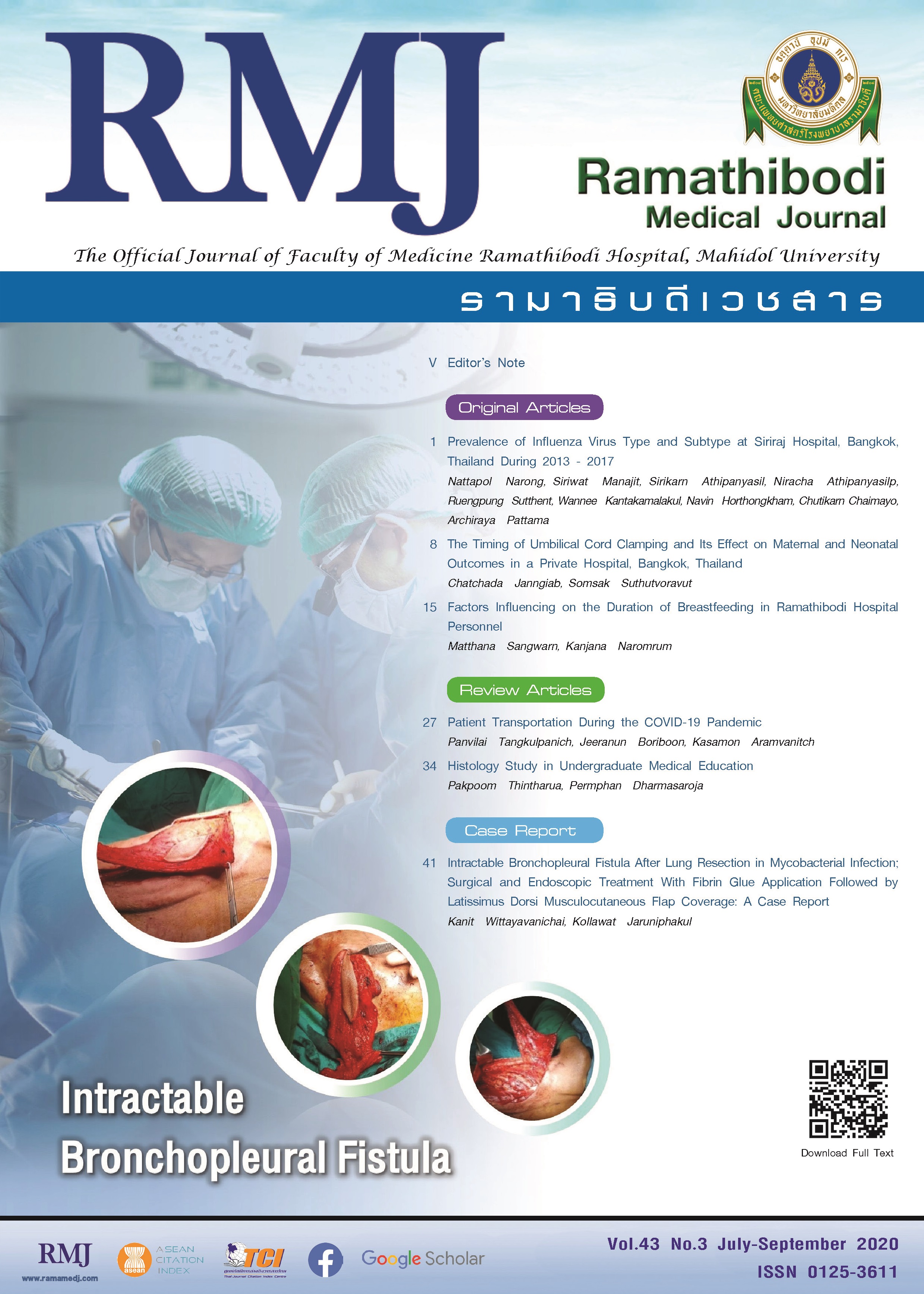Patient Transportation During the COVID-19 Pandemic
DOI:
https://doi.org/10.33165/rmj.2020.43.3.241347Keywords:
COVID-19, Patient transferring, Infection preventionAbstract
Coronavirus disease 2019 or COVID-19 can be transmitted by several methods, which are droplet, contact, and aerosol transmission. This emerging infectious disease has no specific treatment, vaccines, or medical prophylaxis. As a result, health care workers have a higher risk of infection, especially on inter-hospital patient transferring, which causes the close-contact situation in confined space without good ventilating airflow. Proper pre-transferring evaluation of the patient and equipment preparation is essential for preventing unpredicted events that cause aerosol-generating procedures (AGP). Thus, if a patient is at risk of deterioration between transferring, early intubation in hospital is preferred due to better infection controls. Bronchodilators should be given by metered-dose inhaler (MDI) via spacer instead of nebulization. Furthermore, considering the safety of health care personnel, suitable personal protective equipment (PPE) is critical in the scarce situation, which is as vital as the standard of practice and training on the operations, communications, and cleanings.
References
Chan JF, Kok KH, Zhu Z, et al. Genomic characterization of the 2019 novel human-pathogenic coronavirus isolated from a patient with atypical pneumonia after visiting Wuhan. Emerg Microbes Infect. 2020;9(1):221-236. doi:10.1080/22221751.2020.1719902.
Li Q, Guan X, Wu P, et al. Early transmission dynamics in Wuhan, China, of novel coronavirus-infected pneumonia. N Engl J Med. 2020;382(13):1199-1207. doi:10.1056/NEJMoa2001316.
Wu Z, McGoogan JM. Characteristics of and important lessons from the coronavirus disease 2019 (COVID-19) outbreak in China: summary of a report of 72 314 cases from the Chinese Center for Disease Control and Prevention. JAMA. 2020;323(13):1239-1242. doi:10.1001/jama.2020.2648.
Liew MF, Siow WT, Yau YW, See KC. Safe patient transport for COVID-19. Crit Care. 2020;24(1):94. doi:10.1186/s13054-020-2828-4.
Pan American Health Organization. COVID-19 Recommendations: Prehospital Emergency Medical Services (EMS), Draft document, Version 4.4. March 27, 2020. https://www.paho.org/en/documents/covid-19-recommendations-prehospital-emergency-medical-services-ems. Accessed April 23, 2020.
Centers for Disease Control and Prevention. Interim Guidance for Emergency Medical Services (EMS) Systems and 911 Public Safety Answering Points (PSAPs) for COVID-19 in the United States. CDC, 2020. https://www.cdc.gov/coronavirus/2019-ncov/hcp/guidance-for-ems.html. Accessed April 23, 2020.
US Public Health Service Commissioned Corps. Optimizing Ventilator Use during COVID-19 Pandemic. https://www.hhs.gov/sites/default/files/optimizing-ventilator-use-during-covid19-pandemic.pdf. Published March 31, 2020. Accessed April 23, 2020.















